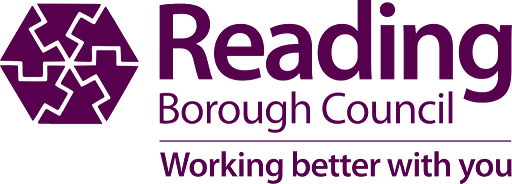Town Centre Red Route to Go Live
THE Town Centre section of Reading’s first ever red route will go live on Monday March 23.
The new section of the ‘no stopping’ restriction is located entirely inside the IDR. Red route restrictions will run along the far east section of the Oxford Road, before its junction with Broad Street, south along St Mary’s Butts and on to Castle Street and Gun Street, north along West Street and then east along Friar Street. A red route is a ‘no stopping’ restriction successfully used on major bus routes in London for many years. It helps keep key public transport moving, minimises delays for bus passengers and improves safety for pedestrians and cyclists by preventing dangerous or illegal parking. Keeping buses moving and punctual encourages more people to swap private car journeys for public transport, which improves the town’s air quality and public health, and feeds into the Council’s Climate Emergency Declaration which is aiming for a net zero carbon Reading by 2030. Reading’s red route runs along the length of the ‘purple’ 17 bus route - the town’s busiest and best used bus service - with nearly 5 million individual trips every year and nearly 100,000 trips per week. When the new central section becomes operational on March 23rd, it will complete Reading’s first red route after eastern and western sections went live in 2018. Sample journey times for the ‘purple 17’ taken on the eastern and western sections already show an average quicker journey time of two minutes. The red route restriction means where double red lines are marked, vehicles cannot stop at any time – Monday to Sunday – including for short periods of loading or unloading. Only disabled blue badge holders, Hackney Carriages (black cabs) and private hire vehicles licensed by Reading Borough Council are permitted to stop to allow for boarding and alighting. Emergency service vehicles will be permitted to stop. Where single red lines are marked, drivers are able to stop or park, but only in accordance with the signed restrictions. Importantly, and following public consultation, parking, loading and disabled bays along the route have been retained where it has been possible. Enforcement of the red route is carried out by a combination of Civil Enforcement Officers and the Council’s mobile CCTV van at this time. Warning notices, rather than fines, will be issued for a short period of time following the initial implementation of the new Town Centre restrictions. This is to ensure people are completely clear about the new restriction and that they can be fined in the future if they ignore them. Fines will then replace the warning notices. Cllr Tony PageTony Page, Reading Borough Council’s Lead Councillor for Strategic Environment, Planning and Transport, said:
“The introduction of a red route along critical sections of the Town Centre will complete Reading’s first red route, which is designed to keep buses frequent and reliable on Reading’s busiest bus route. “Red routes have been successfully used in London for many years to help prevent illegal stopping or parking along busy routes, which disrupts the flow of traffic for buses and for all road users, and which can be extremely dangerous. In Reading, evidence shows that number 17 passengers are already benefitting from quicker journey times since the east and west sections of the red route went live in 2018.“It is also important to note that restrictions have been through extensive public consultation before introduction. A key part was designing a scheme which worked for residents and local businesses, as well as for road users. In almost all cases, existing parking, loading and disabled bays have been maintained, which applies to the new Town Centre section, as well as the east and west stretches of the route” The introduction of Reading’s first red route followed a periods of both informal and formal consultation, beginning in 2017. The east section of Reading’s red route - starting on the Kings Road and running through Cemetery Junction, along the Wokingham Road and ending near to the Three Tuns crossroads – went live in February 2018. It was followed by the western section which became operation in late summer 2018 and runs from Mayfair in Tilehurst to the IDR. Traffic orders for the new Town Centre section of the red route will be advertised in local press shortly, before the scheme becomes operational.“This Council is determined to improve air quality in the town. We have declared a Climate Emergency and with that comes our commitment to creating a net zero carbon Reading by 2030. There are nearly 100,000 individual journeys on the ‘purple 17’ every week and it is essential that we take every opportunity to reduce delays for passengers and encourage even more people to make use of our fantastic bus service instead of the private car.
